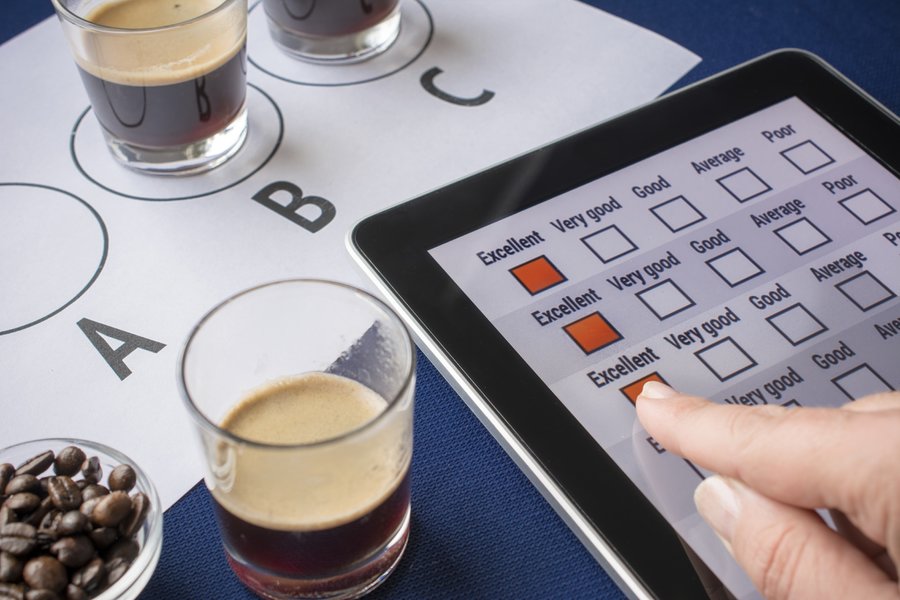ISO 8589 Sensory Analysis Laboratory Design and Testing Conditions
The ISO 8589 standard provides a framework for sensory analysis, which is essential in assessing the quality of food and feed products. This method evaluates attributes such as taste, texture, aroma, and appearance through human perception.
Designing a laboratory that adheres to ISO 8589 guidelines involves several critical considerations:
- Laboratory Layout: The design should ensure that sensory testers can focus on the task without distractions. This includes minimizing background noise and visual stimuli.
- Environmental Control: Temperature, humidity, lighting, and air quality must be carefully controlled to eliminate any external factors influencing taste or smell.
- Sensory Tester Comfort: Ergonomic furniture and comfortable seating are crucial for maintaining tester concentration over extended periods. Lighting should be dimmed to prevent visual bias.
The testing conditions must also comply with ISO 8589, which includes:
- Standardized procedures for sample presentation and consumption
- Controlled temperature and humidity levels during tasting sessions
- Consistent lighting that minimizes visual cues
- Provision of adequate time for testers to make judgments without undue pressure
The ISO 8589 standard is widely recognized in the food and feed industry as a benchmark for ensuring consistent quality assessment. By adhering to these guidelines, laboratories can produce reliable sensory data that are essential for product development, quality control, and compliance with regulatory standards.
Our laboratory ensures that all sensory analysis follows ISO 8589 protocols. Our team of experts meticulously designs the test environment to meet these stringent requirements. We use advanced technology and equipment tailored specifically to food and feed products. Our rigorous testing procedures are designed to provide accurate, repeatable results.
From initial sample preparation to final analysis, our process is focused on delivering reliable data that can be used to make informed decisions about product quality. Our team of sensory experts ensures that each test is conducted under the most precise conditions possible, ensuring consistent and accurate results.
Applied Standards
The ISO 8589 standard is widely recognized in the food and feed industry as a benchmark for sensory analysis. This international standard provides guidelines for the design of laboratories dedicated to sensory evaluation, ensuring that tests are conducted under controlled conditions.
The standard covers several key areas:
- Sample Presentation: Guidelines on how samples should be presented to testers to minimize bias and ensure consistency.
- Tasting Protocols: Procedures for conducting sensory evaluations, including the timing of tastings and breaks between sessions.
- Laboratory Environment: Specifications for maintaining a controlled environment that minimizes external influences on taste and smell.
Our laboratory adheres strictly to these guidelines, ensuring that all sensory tests are conducted under the most precise conditions possible. By following ISO 8589, we can provide our clients with reliable data that is essential for product development, quality control, and compliance with regulatory standards.
Why Choose This Test
The ISO 8589 sensory analysis test is crucial in the food & feed testing sector as it provides a standardized method for evaluating the sensory attributes of products. This ensures that all tests are conducted under controlled conditions, which is essential for maintaining consistency and accuracy.
Here are some reasons why choosing this test is beneficial:
- Precision: The ISO 8589 standard provides precise guidelines for sample presentation and consumption, ensuring that testers can focus on the attributes they need to evaluate without external distractions.
- Consistency: By following these protocols, laboratories can ensure that all tests are conducted under consistent conditions, which is essential for maintaining accuracy and reliability.
- Regulatory Compliance: Adhering to ISO 8589 ensures compliance with international standards, which is crucial for exporting products and meeting regulatory requirements.
The sensory analysis test provides valuable insights into the quality of food & feed products. By evaluating attributes such as taste, texture, aroma, and appearance through human perception, we can help our clients make informed decisions about product development, quality control, and compliance with regulatory standards.
Environmental and Sustainability Contributions
The design and operation of an ISO 8589-compliant laboratory contribute positively to sustainability efforts. By ensuring consistent, reliable sensory data, we can help manufacturers make informed decisions that lead to product improvements and enhanced quality.
- Economic Efficiency: Accurate testing leads to fewer rejections of products during development stages, reducing waste and costs.
- Resource Conservation: By ensuring the highest quality from the outset, we help minimize resource use in production processes.
- Customer Satisfaction: Reliable sensory data ensures that products meet customer expectations, leading to higher satisfaction rates.
Our commitment to sustainability extends beyond our testing procedures. We also ensure that our laboratory operations are conducted in an environmentally responsible manner, contributing to a greener future for the food & feed industry.





